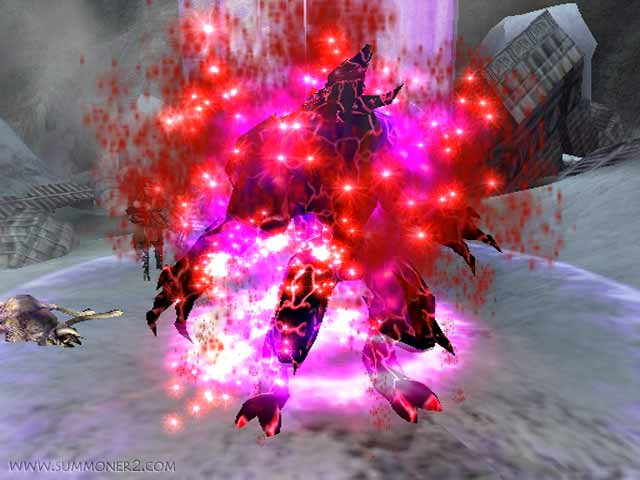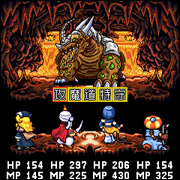
Featured Blog | This community-written post highlights the best of what the game industry has to offer. Read more like it on the Game Developer Blogs.
No More Fire & Ice: Rethinking RPG Magic
A game's magic system is an opportunity to set it apart with unique vision, style and mechanics, yet we often just see the same "fire and ice" spells in many RPGs. Let's see how some classic games have implemented alternative systems of magic.

This is a re-post from my blog at gamemakeworld.wordpress.com.
Most RPGs use “fire-ice-lightning” or “fire-ice-wind-earth” elemental systems of magic, where fire is strong against ice and vice versa, ice spells freeze/slow enemies, etc. Offhand can you think of any RPG where the first offensive spell you learn is NOT “Fireball” or something similar? It’s disturbingly difficult.
In terms of using magic strategically in these systems, it is usually either a simple matter of “use fire magic against ice monster,” or else guess and check (a boss is weak against lightning for no apparent reason and with no indication, etc.).
Of course fire and ice are easy to understand as powerful forces of magic, but when the same system is used so often it starts to lose the sense of excitement and wonder that magic should have. As a powerful supernatural force, magic should also tie in with the foundations of the game’s world. Why is magic divided into fire and ice instead of star and crystal, plastic and metal, or bone and dirt?
There must be more ways to make magic fresh, original, and strategically interesting… Once again, let’s see how games have accomplished this in the past.
COLORS
I know I just discussed Chrono Cross in the last post, but it does interesting things here, too. Characters and enemies have clearly indicated innate colors, which at first glance seem to be the typical elements of fire (red), ice (blue), air (green) and earth (yellow).
However, green is actually not only wind but everything green including plants and poison, while yellow includes earth, lightning, and the sun. Black mainly involves gravity for some reason, while white involves meteors and outer space.

Beeba’s are yellow innate
Enemies are also clearly labeled so that you don’t have to guess what their elemental weakness is (or waste time casting a spell to find out- who has time for that?).
The catch is that, as in many other games with binary magic systems, it’s not necessarily helpful to bring a blue character to fight red enemies. Rather than strategically benefiting you, it just raises the stakes by letting you and the enemy do more damage to each other. In Chrono Cross your characters often just get killed really fast in this situation, so oddly enough it is strategic to avoid bringing characters of the opposite color to boss battles.
Speaking of which…
NON-BINARY ELEMENTAL MAGIC
Instead of Fire and Ice (or Earth and Wind, or Dark and Light) being strong against each other, Saiyuki (PSX) uses five elements- Metal, Fire, Water, Earth, and Tree- which work like an expanded version of rock-paper-scissors. Arranged in a circle, each is strong against the element on one side of it, and weak against the element on the other.

As a water innate character, Sa Gojo is strong against fire magic and weak against earth magic. His tree magic, on the other hand, would be effective against earth innate enemies and less effective against metal enemies.
These relationships allow you to make decisions that actually give you the upper hand in battle. The challenge of course is that enemies always include an assortment of elements, so its not as simple as pitting your fire characters against a horde of metal enemies.
Categories like metal and tree also allow for some unique spells that diverge from the typical “fireball” and “ice blast.”
ORIGINAL ELEMENTAL CATEGORIES
It’s easy to grasp that fire is powerful and destructive, but I like it when a game sets its world apart with a distinct flavor like the monster summons in “Summoner: Goddess Reborn.” Although magic is basically divided into typical categories like Fire, Ice, and Energy, things get really fun with the types of monsters that can be summoned: Blood, Eye, Sand, and Tree.

The main character Maia transforms into the Blood Summon
Each has its own strengths and weaknesses, and they allow for some original monster designs. Plus, they fit the game’s mythology about trees and sand, with recurring images of eyes and masks. In other words, the unique conceptualization of magic is based upon and develops the game’s worldview.
WEATHER/ENVIRONMENTAL MAGIC
Every now and then an RPG throws in a weather mage or geomancer. In Final Fantasy, most Geomancer spells (including Mog’s dances in FF3) are random and only useful in a handful of situations. Daikaijuu Monogatari II for the SNES, however, has a super effective weather mage who was the star of my party.

Daikaijuu Monogatari 2’s amazing bow-using weather mage is on the far right.
Weather magic spells usually end up falling into typical categories like lightning and wind, and exist alongside the traditional fire-ice system, but at least they allow for some neat new spells involving nature and animals.
ABSTRACT LOGICAL CATEGORIES
Skyrim strips away the fanciful fiction and categorizes magic by what it does (Alteration, Restoration, Destruction, etc.). It’s a blunt, no-nonsense approach, and ended up a bit dry for me. In that sense, you could say it fits Skyrim’s worldview of “extremely complex but ultimately lifeless, mechanical world”- though I did think the Dragon Shouts were a nice touch that nicely tied into the gameworld.

Skyrim’s Dragon Shout abilities become available later in the game and involve learning “Words of Power.”
Summoner 2’s Summons and Skyrim’s Dragon Shouts tie together mythology and gameplay in original and exciting ways, but both are essentially extra elements on top of a more standard magic system. What if this originality and vision was applied to a game’s entire conceptualization of magic from the ground up?
OTHER WAYS
Of course, typical magic categories can work if they make sense in the game. Take Borderlands, for example. Fire, electricity, and poison are pretty standard categories, but they make perfect sense in this post-apocalyptic world of destruction, technology and mutation.
But, just for fun, let’s imagine what magic might look like without fire and ice…
What if Chrono Cross’ color magic was taken further? What if Red Magic controlled all red objects, from tomatoes to rubies, while Blue Magic controlled the sky, the sea, and blueberries? A red enemy wearing a yellow shirt might be strong against red with minor defense against yellow. And colors’ effectiveness could be determined by a color wheel in a non-binary system like Saiyuki’s.
Really, any categories could be used as types of magic. Take the flavors, for example. There could be spicy, salty, sweet, and bitter magic, in a world where magical power comes from food.
What about the four seasons? This would probably boil down to cold (winter) versus hot (summer), but it could at least lead to some cool new spells. What would an autumn mage look like, and what spells would she use?
Or, what if magic power was derived from the signs of the Zodiac? A character whose astrological sign is Sagitarius could use magic arrow attacks and summon centaur stampedes, while a Cancer would have snappy claw attacks.
Mages could also control different laws of the physical world- one works with gravity, one with time, another with states of matter, etc… (Of course Time Mages exist in Final Fantasy and other games, but they are usually just there to cast support magic alongside typical fire and ice.)
But what if the states of matter themselves were the source of magic- Solid, Liquid, and Gas magic! I guess Solid Magic would be weak in areas with high temperatures, while liquids would freeze and become ineffective in the cold. There could even be a rare and legendary Plasma Mage!
As always, I’d love to hear about the magic system in your games, tips for games with unique implementations, and the random idea that you’ve just been toying with in your head.
Read more about:
Featured BlogsAbout the Author(s)
You May Also Like







